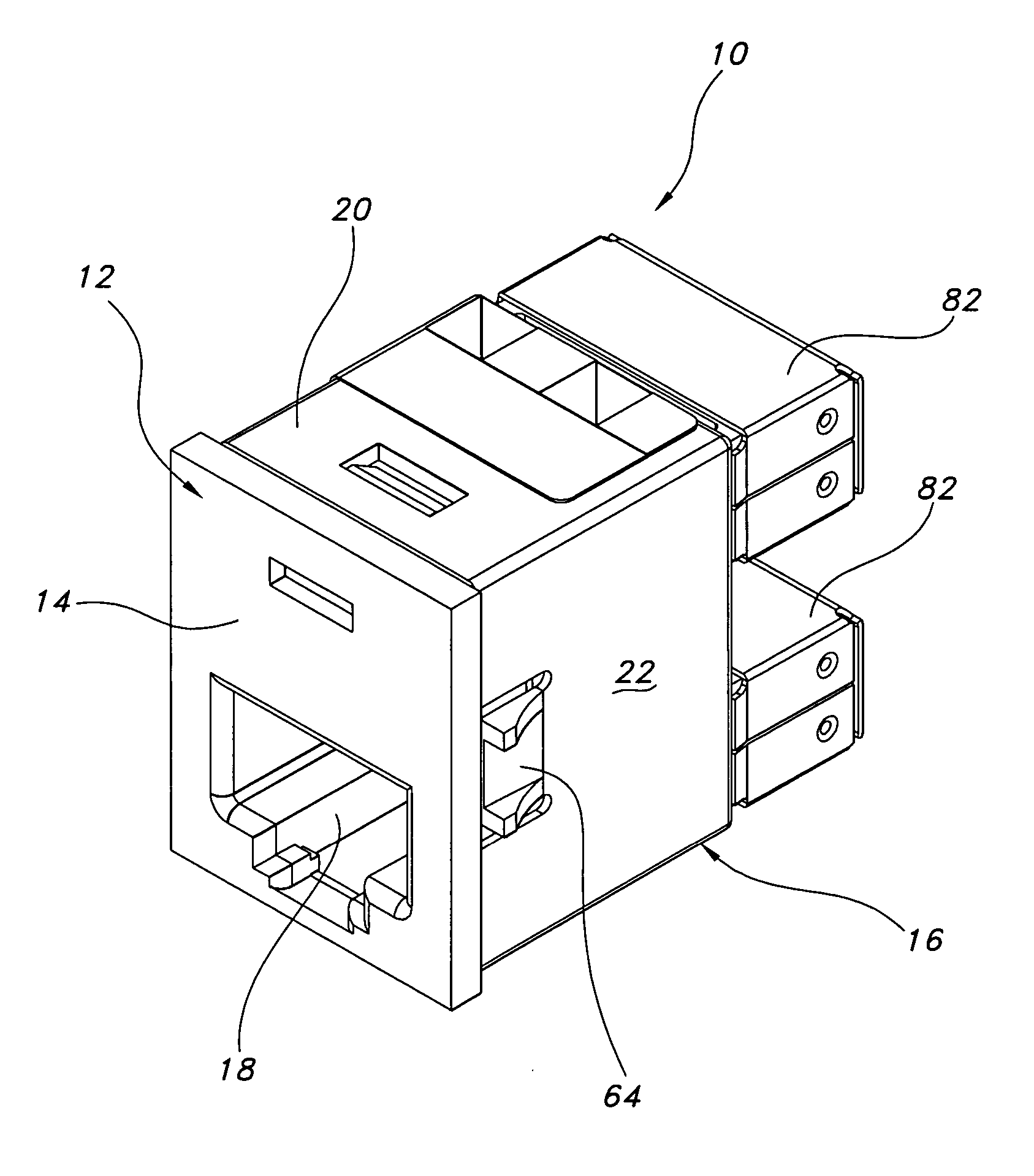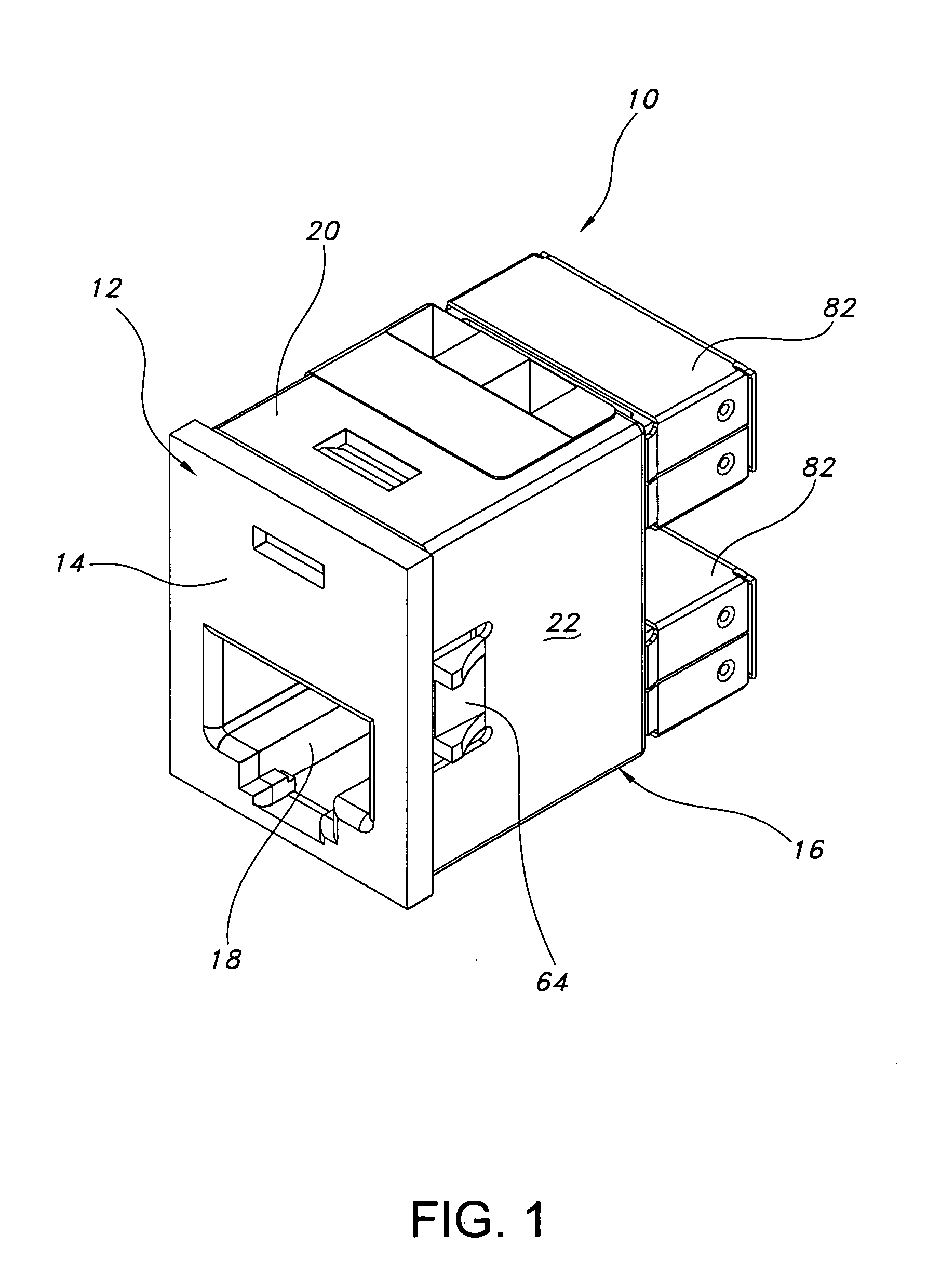Electrically isolated shielded connector system
a shielded connector and shielded technology, applied in the direction of coupling device connection, coupling device details, coupling protective earth/shielding arrangement, etc., can solve the problems of increasing the effect, reducing the size, installation time, and increasing the cost of the cable and associated connectors, and inducing interference within
- Summary
- Abstract
- Description
- Claims
- Application Information
AI Technical Summary
Problems solved by technology
Method used
Image
Examples
Embodiment Construction
[0027] Referring to FIGS. 1-4, a connector 10 is illustrated. Connector 10 includes a front housing 12 that has a front face 14 and a main body 16. Front face 14 has a front opening 18 that is shaped to receive a telecommunication connector (not shown). Main body 16 has four sides (only three are shown) 20, 22, and 24. Sides 22 and 24 each have side openings 26 and 28. Side 20 has a notch 30. A back side 32 includes a back opening 34. Front housing 12 is made of engineering plastics, such as an ABS that is a copolymer of Acrylonitrile, Butadiene, and Styrene. ABS plastics generally possess medium strength and performance and at a reasonable cost that can be color coded to the customer's selection.
[0028] Connector 10 also includes a printed circuit board assembly (PCB) 40 that has a modular insert 42 that is slidably received into back opening 34. Modular insert 42 has a plurality of channel guilds for receiving contacts of the connector. Modular insert 42 contains terminals having ...
PUM
 Login to View More
Login to View More Abstract
Description
Claims
Application Information
 Login to View More
Login to View More - R&D
- Intellectual Property
- Life Sciences
- Materials
- Tech Scout
- Unparalleled Data Quality
- Higher Quality Content
- 60% Fewer Hallucinations
Browse by: Latest US Patents, China's latest patents, Technical Efficacy Thesaurus, Application Domain, Technology Topic, Popular Technical Reports.
© 2025 PatSnap. All rights reserved.Legal|Privacy policy|Modern Slavery Act Transparency Statement|Sitemap|About US| Contact US: help@patsnap.com



